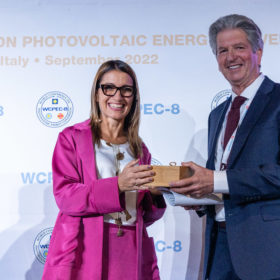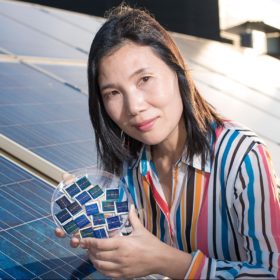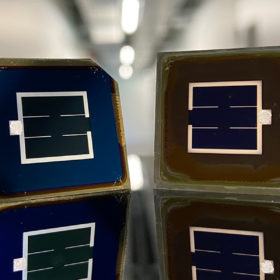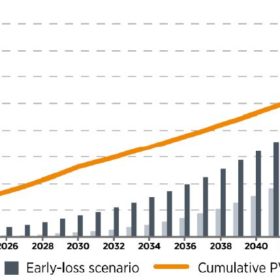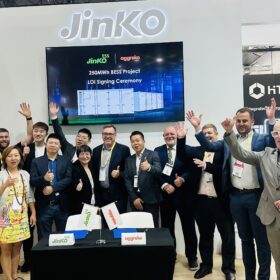UNSW researchers say solar needs to slim down on silver
New research from the University of New South Wales outlines the need for solar cell and module makers to reduce or eliminate the use of silver in their products. Based on expected PV growth, in line with climate change commitments, solar manufacturers would require at least 85% of global silver reserves, according to the new study.
Pioneering solar researcher hails funding ‘turnaround’
World-leading solar researcher UNSW Scientia Professor Martin Green says that PV research activities in Australia right across the value chain will be accelerated by the recent $41.5 million (USD 28.5 million) funding awards from the Australian Renewable Energy Agency. The funding will foster the development of ultra-low-cost solar by extending and expanding nine UNSW solar research programs.
UNSW claims provisional record for fastest single-charge EV over 1,000 km
A solar-powered electric vehicle, designed and built by students of the University of New South Wales (UNSW), has claimed a provisional Guinness World Record by going 1,000 kilometres on a single charge. The researchers managed the feat in under 12 hours.
UNSW researchers patent low-cost additive to solve perovskite’s stability problem after achieving world-class results
Researchers from UNSW have discovered a low-cost way to stabilise perovskite solar cells with a “triple function, cheap additive,” research lead Professor Hao tells pv magazine Australia. Perovskite cells using the additive have returned the best stability results yet seen in Australia, according to the team, and among the best in the world.
Independent tool providing answers to complexities of home solar, storage launched
A free version of SunSPOT, a tool for tailored guidance on the ideal solar and battery set ups, has now been launched. Developed by APVI and UNSW, the online tool allows users to calculate size, cost and potential savings from household renewable systems and is the only such platform offering this information without a sales motive.
Martin Green’s solar cell efficiencies at a glance updated
A research group led by Professor Martin Green has published Version 61 of the solar cell efficiency tables. The tables include a world record for a silicon heterojunction cell, announced by Longi earlier this week, as well as five more new results.
Weekend read: A sustainability swan song
Pioneering PV researcher Martin Green has received an abundance of accolades over his 50-year career of fundamental solar research with teams at the University of New South Wales (UNSW). That contribution was further recognised on Sept. 26, when he picked up the WCPEC-8 Award in Milan, Italy. Green spoke with pv magazine about the role of technologies such as PERC cells and his efforts to advance non-toxic thin film semiconductors for the tandem cells of the future.
UNSW’s Martin Green picks up $1.5 million Millennium Technology Prize
Australian research that has seen crystalline silicon (c-Si) PV technology takes its place in the mainstream of the global energy industry has been recognised by picking up Finland’s top technology award. The €1 million (AUD 1.55 million) Millennium Technology Prize has been awarded to UNSW Scientia Professor Martin Green, in recognition for his work in developing passivated emitter rear contact (PERC) technology – the mainstay cell of the modern solar industry.
UNSW researchers develop high yield, low cost, eco-friendly process to recycle Si-PV modules
A team of researchers from the University of New South Wales (UNSW) has proposed a cost-effective way to recycle silicon solar panels. Their process consists of module deframing, laminate shredding and material concentration using electrostatic separation, reducing their original weight by 2% to 3%.
Google to use Australian power tracing tech in Sydney trial
Google will be using Australian company Enosi’s technology to trace its energy use in Sydney, part of its journey towards time matched renewables – a far more ambitious and globally favoured standard.

